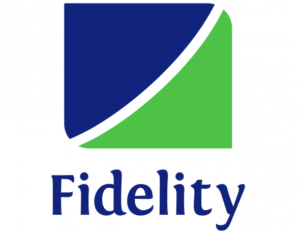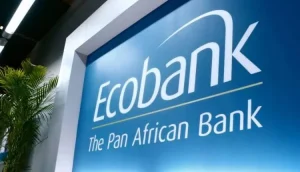
Prelude: The Dark Before the Dawn
Until recently, Nigeria’s largest food‑and‑beverage player found itself in troubled waters. Just one year ago, Nestlé Nigeria was reeling from massive foreign‑exchange shocks, currency devaluation, spiralling costs and negative equity. In the first half of 2024 the company posted a loss before tax (LBT) of around ₦252.2 billion, and a loss after tax of about ₦176.6 billion, reflecting how deeply the business had been impacted by macroeconomic instability. (Western Post)
Indeed, analysts flagged the company’s exposure to foreign‑currency borrowings and the naira’s volatility as major hurdle for Nigerian‑listed multinationals. (Nairametrics)
H1 2025: The Turnaround Highlights
In a remarkable reversal, Nestlé Nigeria delivered the following for the six‑month period ended 30 June 2025:
- Revenue jumped 43% year‑on‑year, rising to ₦581.1 billion from approximately ₦407 billion in H1 2024. (Tribune Online)
- Operating profit surged by 106%, climbing to ₦130.4 billion from ₦63.4 billion in H1 2024. (Tribune Online)
- Profit before tax (PBT) swung from a loss of ₦252.2 billion to a profit of ₦88.4 billion in H1 2025. (Western Post)
- Profit after tax (PAT) reached ₦50.6 billion, compared to the prior‑year loss of ₦176.6 billion. (Western Post)
- The company improved its equity position by roughly ₦50.6 billion, aided by the early repayment of a US$20 million inter‑group foreign‑currency loan in Q2 2025 — a move analysts say helped reduce FX‑risk exposure. (Businessday NG)
In his commentary, CEO/MD Wassim Elhusseini remarked:
“The robust topline growth of 43 % and profit after tax of N50.6 billion in H1 2025 support our return to profitability, which commenced in Q4 2024. … This performance reflects our unwavering commitment to operational excellence, the support of our stakeholders and the dedication of our team…” (Western Post)
He added that going forward the company would “focus on improving our margin management while driving innovation and renovation to meet changing consumer needs” and would also “maintain our investment in community programmes that create sustainable value for our stakeholders.” (Businessday NG)
Investigating the Mechanics: What’s Behind the Turnaround?
To understand how Nestlé Nigeria achieved this near‑miraculous turn, three major themes emerge:
- Revenue Growth & Pricing Power
The 43 % revenue growth was not simply volume‑driven—rather, it reflected strong demand for key brands and ability to pass through cost increases. According to segment data, the food segment rose 46.1 % y/y to ₦380.8 billion and the beverages segment rose 36.9 % to ₦200.3 billion. (Investadvocate)
The domestic market (Nigeria) drove most of the growth (₦577.5 billion vs ₦404.1 billion a year earlier) while exports remained small but improved. (Investadvocate)
This suggests Nestlé Nigeria leveraged its strong brand presence (Maggi, Milo, Golden Morn, Cerelac etc) and extensive distribution network to weather the economic storm. - Cost‑Efficiency & FX Risk Management
While input costs remained elevated (raw material costs, labour, overheads all increased), the company improved its cost‑to‑sales ratio — from ~68.7 % in H1 2024 down to ~61.3 % in H1 2025. (Investadvocate)
Crucially, finance costs collapsed: net finance cost plunged from about ₦315.6 billion to ₦42.05 billion year‑on‑year — a nearly 87 % reduction. Much of this was due to foreign‑exchange translation gains replacing prior huge losses (e.g., an FX loss of ₦233.1 billion in prior year turned into a gain of ₦2.30 billion in H1 2025). (Investadvocate)
The early repayment of the US$20 million inter‑group loan also contributed. Analysts interpret this as management prioritising balance‑sheet de‑risking over short‑term glory. (Businessday NG) - Macroeconomic and Market Context
The Nigerian macro‑environment is still challenging — high inflation, naira volatility, and elevated cost structures remain. Yet for this period, the company appears to have benefited from a more stable naira exchange window, controlled inflation, and improved predictability in inputs. For example, one analyst noted the naira had hovered around N1,500‑1,550 for some months, providing a reprieve. (Businessday NG)
The resilience of consumer staples in a downturn also played its part: despite economic stress, households still buy essentials such as food, seasonings, beverages — though at adjusted mixes and price points.
Societal Implications: Why This Matters
This story is not just about one company’s financials—it touches several broader issues:
- Investor Confidence & Capital Markets: A multinational FMCG turning around convincingly provides a signal to domestic and foreign investors that Nigeria remains a recoverable market. Particularly given the investor caution that followed 2023‑24 FX shocks and corporate earnings losses.
- Household Consumption & Food Security: When a major food‑company can raise revenue significantly, it implies that despite inflation, consumers are still purchasing. However, the flip side is that price increases may reflect inflation passing through to the consumer, which raises questions about affordability and living‑standards.
- Corporate Governance and Risk Management: The case shows how managing FX debt and currency‑risk—a traditional vulnerability for Nigerian enterprises—can be a critical difference‑maker. This emphasises the importance of risk‑aware corporate behaviour and balancing growth with de‑risking.
- Employment and Community Investment: Nestlé’s stated commitment to community programmes and sustainable value implies that beyond shareholders, other stakeholders (employees, suppliers, local communities) are part of the narrative. In a country with high unemployment and under‑employment, a healthier company means better prospects for jobs, supplier contracts, and local economic linkage.
- Broader Economic Recovery Signal: The turnaround of Nestlé Nigeria is one piece of evidence in a wider narrative of economic stabilisation in Nigeria. If corporate earnings recover, this can feed into jobs, supplier activity, tax revenues and overall economic sentiment.
Unanswered Questions & Risks Ahead
While the results are impressive, there remain key caveats and areas for deeper scrutiny:
- Sustainability of the Turnaround: Will Nestlé Nigeria be able to sustain a full‑year profit and positive momentum into 2026? Projections suggest the company may record around ₦118 billion net income for full‑year 2025. (Businessday NG)
- FX Exposure and Balance‑Sheet Fragility: The company still carries the legacy of past deficits — accumulated losses stand at around ₦192.7 billion (from a prior ₦243.2 billion) as of mid‑2025. (Punch Newspapers) Until equity turns positive, dividend payments remain unlikely. (Nairametrics)
- Input‑Cost Inflation & Supply‑Chain Pressure: Raw material inflation, labour cost increases, logistic‑freight hikes remain ongoing structural pressures. Segment data indicate increases in direct labour, overheads, freight and consumer‑promotion costs. (Investadvocate)
- Affordability & Consumer Behaviour: The growth in revenue may reflect price increases rather than purely volume growth. That raises questions about how much of this growth is sustainable given income pressures on consumers.
- Sector Vulnerabilities & Competitive Pressures: While Nestlé is currently benefiting from brand strength and distribution, smaller rivals or imports may seek to exploit weaker segments; regulatory changes (import tariffs, FX policy) could also disrupt the favourable context.
- Corporate Social Responsibility Vs. Profit Focus: Management’s public commitment to community programmes is welcome, but the question remains whether the profit‑led rebound translates into broader inclusive growth — for employees, suppliers and local communities — or remains shareholder‑centric.
Verdict & Wider Lessons
Nestlé Nigeria’s H1 2025 turnaround is a textbook case of operational execution meeting macro relief and disciplined financial management. It underscores that even in volatile economies, large consumer‑staple firms can deliver when they:
- lean into brand strength and distribution reach;
- actively manage currency and debt exposure;
- invest in cost‑efficiency and margin improvement;
- and navigate macro conditions smartly.
For Nigeria, the significance is clear: the rebound of a major FMCG player signals that corporate Nigeria can emerge from a prolonged period of currency instability and cost shock. It offers hope for the capital markets, for jobs, for consumer‑goods supply‑chains, and for the resilience of domestic manufacturing.
However, the story is not yet complete. Sustaining the turnaround will require that Nestlé Nigeria convert this half‑year momentum into full‑year performance, rebuild balance‑sheet solidity, ensure affordability for consumers, and deliver inclusive value for local stakeholders beyond just shareholder returns.
As one analyst put it: “Strong cash‑flow, but dividends likely only by 2026” — meaning the company is still rebuilding. (Nairametrics)
In sum: this is a compelling story of resilience and strategic adjustment — but also a caution: vigilance remains key. For Nigeria’s economy, corporate good news matters; but lasting positive impact depends on the how, who, and what next.
Sources:
– “Nestlé Nigeria’s revenue rises by 43% in H1 2025” — Tribune Online. (Tribune Online)
– “Nestlé Nigeria extends turnaround with N50.6 bn H1 profit” — BusinessDay NG. (Businessday NG)
– “Nestlé Nigeria reports N50.6bn profit” — PunchNG. (Punch Newspapers)
– “Nestlé Nigeria swings to N50.6bn profit on operational gains” — Business A.M.. (Business AM Live)
– “Nestlé Nigeria H1 2025; Good Half Year Performance despite Q2 revenue dip” — InvestAdvocate. (Investadvocate)
– “Nestlé H1 2025 results: Strong cash flow, but dividends likely by 2026” — Nairametrics. (Nairametrics)










